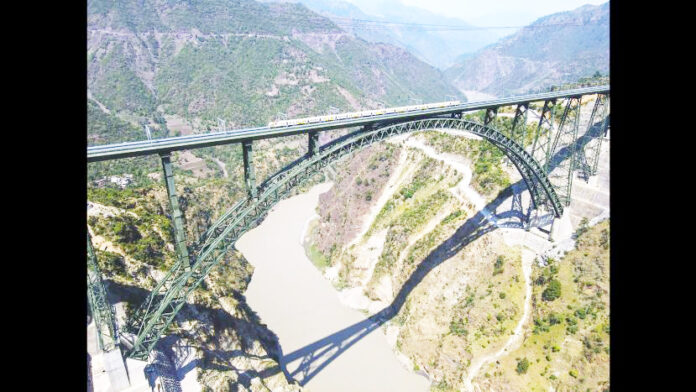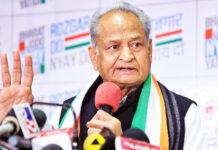The contrast between India’s constructive strategy in J&K and Pakistan’s divisive approach in PoJK couldn’t be starker
NEW DELHI: The abrogation of Article 370 in August 2019 marked a turning point in the trajectory of Jammu & Kashmir (J&K), both politically and developmentally. While Pakistan continues to exploit youth in the region through indoctrination, radicalisation, and terrorism, India has responded not with coercion but with construction: laying roads, railways, tunnels, and runways to stitch the Union Territory firmly into the national economic fabric. The contrast between India’s constructive strategy in J&K and Pakistan’s divisive approach in Pakistan-occupied Jammu & Kashmir (PoJK) couldn’t be starker. The infrastructure transformation following the abolition of Article 370 has not only enhanced connectivity but also instilled hope, created jobs, and brought remote regions into the mainstream.
INDIA’S INFRASTRUCTURE PUSH
India’s renewed push to strengthen infrastructure in Jammu and Kashmir, following the revocation of Article 370, is visible across various sectors, including transportation, power, and digital connectivity. As of 2024, more than 2,200 infrastructure projects worth over Rs 25,000 crore have been completed or are in progress in Jammu and Kashmir under various schemes, including the Prime Minister’s Development Package (PMDP), Bharatmala, and the Udhampur-Srinagar-Baramulla Rail Link (USBRL).
ROADS AND HIGHWAYS
One of the most significant transformations has come in road connectivity. The construction of highways and all-weather roads is transforming mobility in a region previously marred by isolation. Under the PMGSY (Pradhan Mantri Gram Sadak Yojana), over 12,000 kilometres of roads have been built or upgraded, ensuring last-mile connectivity to hundreds of villages in mountainous terrain.
Major national highways, such as NH-44 (the Jammu-Srinagar Highway), have undergone extensive upgrades, including the installation of tunnel infrastructure. Notable examples include the ChenaniNashri Tunnel (also known as the Patnitop Tunnel or Dr. Syama Prasad Mookerjee Tunnel) and the Zojila and Z-Morh (Sonamarg) tunnels, which will ensure year-round access to Ladakh and drastically reduce travel time.
The Zojila Tunnel, in particular, will be the longest bi-directional tunnel in Asia, reducing a treacherous 3.5-hour mountain drive to just 15 minutes. These roadways are not just physical conduits; they are also social and cultural. They are economic lifelines, linking farmers to markets, students to universities, and tourists to once-inaccessible destinations.
RAILWAYS
The most ambitious integration project is the Udhampur-Srinagar-Baramulla Rail Link (USBRL). This long-awaited rail project connects the Kashmir Valley with the Indian Railways’ national grid for the first time. With the recent inauguration of key stretches and the completion of the Chenab Rail Bridge, the world’s highest railway bridge, the dream of seamless train connectivity from Kanyakumari to Kashmir is now a near reality. This integration is revolutionary. The rail link will slash transportation costs for goods, ease the movement of people, and promote economic decentralisation, bringing industries and investments to hitherto neglected regions. It is the physical manifestation of India’s promise of “Vikas” (development) over “Vilamb” (delay).
AIRPORTS AND AVIATION
Following the abolition of Article 370, air connectivity has also experienced a significant boost. Srinagar Airport has been upgraded to international standards, and Jammu Airport has seen significant expansion. New routes under the UDAN (Ude Desh ka Aam Nagrik) scheme have connected places like Kargil, Kishtwar, and Poonch to major cities via helicopter and small aircraft services. Passenger traffic at Srinagar Airport has doubled in the last five years, a direct reflection of increased tourism and business activity. These developments are not just about movement. They symbolise opportunity, accessibility, and normalcy returning to a land once crippled by conflict.
CONTRAST WITH POJK
While India has focused on infrastructure-led inclusion, PoJK remains mired in underdevelopment, political repression, and systemic exploitation. Pakistan has used PoJK not for development but as a strategic outpost to train and funnel terrorists into India. Basic services, such as healthcare, education, and electricity, are severely lacking in regions like Gilgit-Baltistan and Mirpur. Young people in PoJK are offered guns instead of jobs and propaganda instead of education. Meanwhile, youth in India’s Jammu and Kashmir ( J&K) are benefiting from Skill India initiatives, Digital India programmes, and recruitment into central and state government jobs. Over 25,000 youth have been recruited into government and armed forces posts since 2019, a number that directly counters Pakistan’s radicalisation campaign.
DEBUNKING PAKISTAN’S FALSE NARRATIVES
Pakistan has long used the J&K issue to push a narrative of alienation and “human rights violations” in global forums. However, the data on the ground tells a different story: one of investment, empowerment, and democratic renewal. Panchayat and DDC (District Development Council) elections have seen record turnouts. Tourism has rebounded strongly, with over 2 crore tourists visiting Jammu and Kashmir (J&K) in 2023, the highest number in its history. New hospitals, universities, and start-up incubators are coming up rapidly. These are not signs of a population under siege. They are indicators of a region embracing peace and progress.
INFRASTRUCTURE AS THE ARCHITECTURE OF PEACE
The revocation of Article 370 was more than a legal reordering; it was the removal of a psychological and logistical barrier that prevented Jammu & Kashmir’s full integration with India. Infrastructure, often seen as a matter of brick and mortar, is in this case an instrument of justice, equity, and national unity. While Pakistan’s tools remain propaganda and proxy war, India’s instruments are roads, railways, runways, and reforms. The contrast is not just political; it is moral. By investing in its people and connecting them to opportunities, India is ensuring that the youth of Jammu and Kashmir choose progress over provocation and development over divisiveness.
Ashish Singh is an awardwinning senior journalist with over 18 years of experience in defence and strategic affairs.








